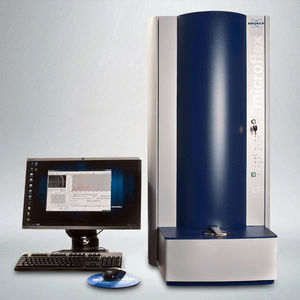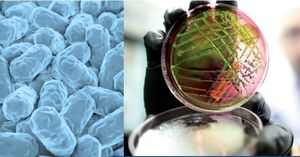
- Laboratory
- Laboratory medicine
- Charles River Laboratories
- Company
- Products
- Catalogs
- News & Trends
- Exhibitions
Analysis laboratory information system RiboPrinter® data managementlaboratory
Add to favorites
Compare this product
Characteristics
- Function
- analysis, data management
- Application domain
- laboratory
Description
Ribotyping is a fragment-based technology utilizing restriction enzymes to target and cut regions of the ribosomal RNA genes (5S, 16S, 23S and the spacer region including Glu-tRNA), generating a DNA fingerprint that is unique to the organism at the strain level.
The Ribotyping system groups together samples whose RiboPrint® patterns fall within a fixed degree of similarity. These patterns can be generated prior or subsequent to each other and may be used to determine the level of similarity between isolates as part of a tracking and trending exercise in an Environmental Monitoring (EM) program. Our team builds and maintained a custom library for each customer who submited samples for riboprinting. Each time the customer submited a new sample, it was compared to all previous samples in their custom library and assigned to a RiboGroup.
In some cases, automated ribotyping can be less effective than sequence-based strain typing, as some species have very little diversity within the ribosomal RNA operon analyzed by the RiboPrinter®. In these cases, sequence-based methods for bacterial strain characterization (SLST and MLST) can provide a much higher level of discrimination and repeatability than automated riboprinting and should be strongly considered.
What is ribotyping of bacterial strains?
Ribotyping is an automated fragment-based analysis of the organism’s DNA fingerprint using the RiboPrinter® system for bacterial characterization.
What is a riboprinting pattern?
Riboprinting is a fragment-based technology that utilizes restriction enzymes to target and cut regions of the ribosomal RNA genes (5S, 16S, 23S,
Catalogs
No catalogs are available for this product.
See all of Charles River Laboratories‘s catalogsOther Charles River Laboratories products
Microbial Identification and Strain Typing
Related Searches
- Assay kit
- Solution reagent kit
- Immunoassay assay kit
- Infectious disease detection kit
- Analysis software
- Laboratory reagent kit
- Enzyme reagent kit
- Buffer solution reagent kit
- Control software
- ELISA assay kit
- Bacteria reagent kit
- Laboratory software
- IgG test kit
- Reporting software
- Cell assay kit
- Microbiology reagent kit
- Automated software
- Monitoring software
- Hospital software
- Tracking software
*Prices are pre-tax. They exclude delivery charges and customs duties and do not include additional charges for installation or activation options. Prices are indicative only and may vary by country, with changes to the cost of raw materials and exchange rates.






